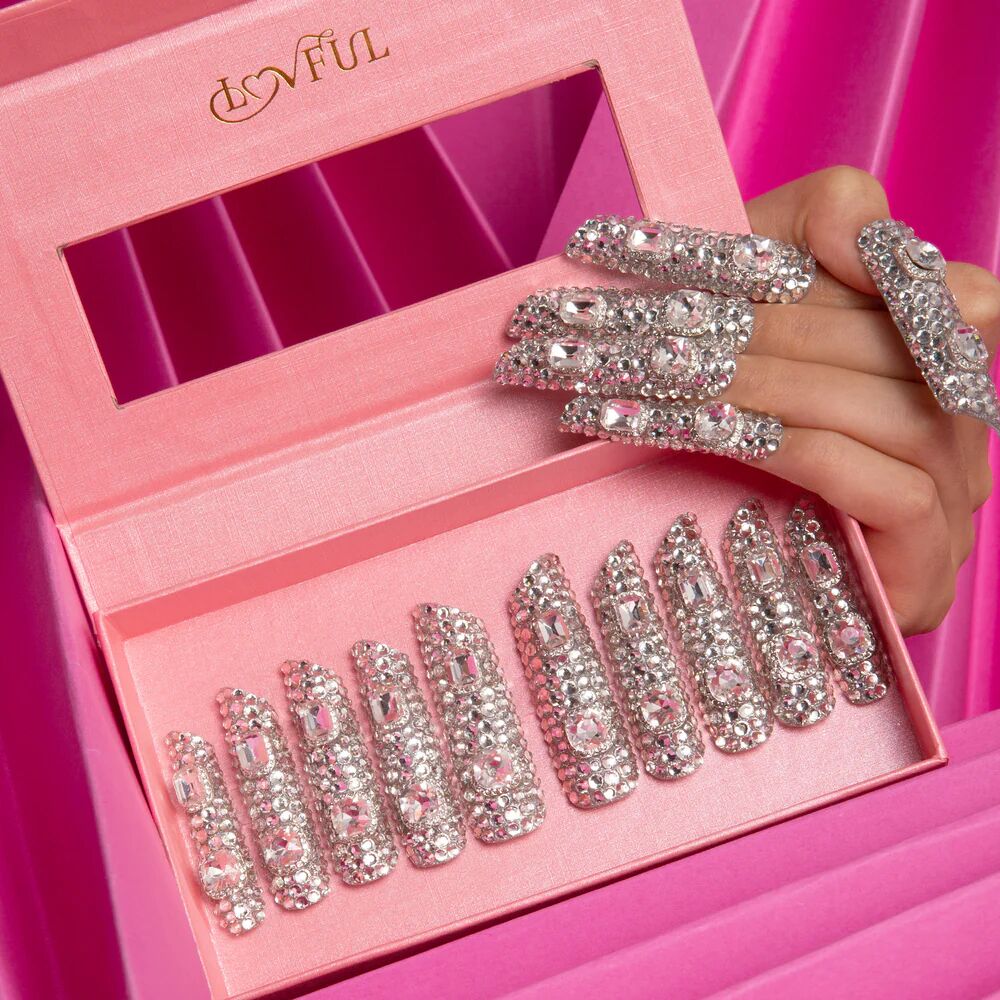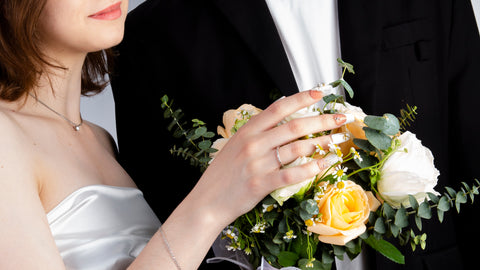
That tiny piece of skin next to your nail can cause big problems. Hangnails aren't just annoying – they can hurt and even get infected. But don't worry, you can prevent them. Knowing what causes hangnails is the first step to avoiding them. When you understand hangnails, you're not just taking care of your nails; you're keeping your whole hands healthy. This matters for everything from using your phone to shaking hands. Healthy nails make daily tasks easier and help you feel more confident. Let's learn how to keep those pesky hangnails away and keep your fingers looking great.

Cut hanging skin using nail clippers
What Are Hangnails?
Hangnails are small pieces of skin that stick out near your nails. They're not actually part of the nail itself. Instead, they come from the skin around your nails, called the cuticle.
Cuticles Matter
Your cuticles are important. They protect the area where your nail grows. Think of them as a shield for your nails. When cuticles get dry or damaged, hangnails can form.
Hangnails Are Different from Other Nail Problems
It's easy to mix up hangnails with other nail issues. Here's how they're different:
- Hangnails are skin, not nail. They're pieces of skin that have come loose.
- Unlike ingrown nails, hangnails stick out instead of growing into your skin.
- Hangnails are not the same as split nails. Split nails are cracks in the nail itself.
Why Hangnails Are a Problem
Hangnails might seem small, but they can cause several issues:
- They can hurt, especially if they catch on things like clothes or hair.
- They can let germs into your skin, which might lead to infections.
- They can make your hands look messy, which might bother you.
Understanding hangnails helps you take better care of your nails. When you keep your cuticles healthy, you're less likely to get hangnails. This means your nails will look better and be healthier overall.
What Causes Hangnails
Hangnails can be annoying, but understanding why they happen can help you prevent them. Here are the main reasons you might get hangnails:
1. Dryness and Damage
Dry skin is a big cause of hangnails. This can happen because of:
- Cold or dry weather
- Washing your hands too often
- Using harsh soaps or chemicals
When your skin gets too dry, it can crack and form hangnails. Also, if you bite your nails or pick at your cuticles, you're more likely to get hangnails. These habits damage the skin around your nails.
2. Your Environment and Activities
What you do and where you are can affect your nails:
- Cold weather can dry out your skin and nails
- Working with your hands, especially without gloves, can cause damage
- Cleaning products and nail polish removers can dry out your skin
If you bump or injure your nails, it can also lead to hangnails.
3. Health and Nutrition
Your overall health plays a role in nail health:
- Not eating enough protein or vitamins can make your nails and skin weaker
- Some health conditions can make you more prone to dry skin and hangnails
Eating a balanced diet and staying hydrated can help keep your nails strong and prevent hangnails.
How to Tell If Your Hangnail Is Infected
Sometimes, a simple hangnail can become infected. Knowing the signs can help you get proper treatment quickly. Here's what to look out for:
1. Early Signs of Infection
Watch for changes around your hangnail. If the skin becomes red, swollen, or feels warm to the touch, these could be early signs of infection. You might also notice some tenderness or mild pain when you touch the area. These symptoms often appear within a day or two after getting a hangnail.
2. More Serious Symptoms
If the infection gets worse, you might see pus around the hangnail. The area might become more painful, and the redness could spread beyond the immediate area of the hangnail. In some cases, you might even develop a fever. These are signs that the infection is becoming more serious and needs medical attention.
3. Changes in Nail Appearance
An infected hangnail can affect your nail too. Look for any changes in your nail's color or texture. If your nail starts to look discolored, especially with a greenish or yellowish tint, or if it becomes thick or starts to separate from the nail bed, these could be signs of a spreading infection.
4. When to See a Doctor
If you notice any of the more serious symptoms, or if early signs don't improve after a day or two of home care, it's time to see a doctor. Also, if you have diabetes or a weakened immune system, it's best to consult a healthcare provider even for minor hangnail infections, as they can become serious more quickly.

Lovful Nail Growth Oil helps you prevent hangnails
Four Easy Ways to Prevent Hangnails
Stopping hangnails is easier than dealing with them later. Here are simple things you can do to keep your nails healthy:
1. Moisturize Often
Dry skin is the biggest cause of hangnails. Use hand lotion every day, especially after washing your hands. Before bed, put on a thick moisturizer. Don't forget to use cuticle oil or cream on your nails and the skin around them. When your skin stays moist, it's less likely to crack and form hangnails.
2. Shield Your Hands
Your daily activities can hurt your nails. Wear gloves when you clean or work with your hands. In cold weather, gloves protect your skin from getting dry and cracked. Try not to use your nails as tools, like for opening cans. These simple habits can prevent damage that leads to hangnails.
3. Care for Your Nails Properly
Good nail care helps prevent hangnails. Trim your nails regularly and smooth any rough edges with a file. Be gentle with your cuticles - don't cut them or push them back too hard. Choose nail products that aren't too harsh. When you take good care of your nails, the skin around them stays healthier too.
4. Boost Your Overall Health
Your diet and health affect your nails. Eat foods with plenty of protein and vitamins. Drink enough water to keep your whole body, including your skin, hydrated. Some people find that taking biotin supplements helps their nails, but ask your doctor first. When your body is healthy, your nails are stronger and less likely to develop hangnails.
How to Use Press-On Nails Without Getting Hangnails
Press-on nails can be fun and stylish, but they can also cause hangnails if not used correctly. Here's how to enjoy press-on nails while keeping your natural nails healthy:
1. Pick the Right Size
Choosing the correct size is crucial. Press-on nails that are too small can pinch your skin, while ones that are too big can catch on things and cause damage. Measure your nails carefully and select press-ons that match each nail's size. A good fit helps prevent stress on your cuticles, which can lead to hangnails.
2. Apply and Remove Gently
How you put on and take off press-on nails matters. Apply them carefully, avoiding pushing too hard on your cuticles. When it's time to remove them, don't force or peel them off. Instead, soak your nails in warm, soapy water to loosen the adhesive. Gently wiggle the press-ons off to avoid damaging your natural nails and the surrounding skin.
3. Give Your Nails a Break
Wearing press-on nails all the time can weaken your natural nails and dry out your cuticles. Take breaks between applications to let your nails breathe and recover. During these breaks, moisturize your nails and cuticles well. This helps keep your natural nails strong and less prone to hangnails.
4. Keep Things Clean
Cleanliness is important when using press-on nails. Before applying them, make sure your natural nails are clean and dry. After removing press-ons, gently clean your nails to remove any leftover adhesive. This prevents irritation that could lead to hangnails. Always use clean tools and fresh adhesive for each application.

Healthy cuticle areas with Lovful press on nails (H91 American Cheetah)
Effective Ways to Treat Hangnails
When you have a hangnail, follow these steps to treat it safely and effectively:
1. Soften the Hangnail
Start by soaking your hands in warm water for about 10 minutes. This softens the hangnail and the skin around it, making it easier to treat. You can add a few drops of mild soap or olive oil to the water for extra softening.
2. Trim Carefully
After soaking, use clean, sharp nail scissors or clippers to carefully cut off the hangnail. Trim as close to the base as possible without cutting into live skin. Never pull or tear the hangnail, as this can cause more damage.
3. Disinfect the Area
Apply an antiseptic solution like hydrogen peroxide or rubbing alcohol to the trimmed area. This helps prevent infection. You can use a cotton swab for precise application.
4. Apply Healing Ointment
Use an antibiotic ointment or vitamin E oil on the affected area. These products promote healing and provide a protective barrier. Apply a small amount directly to the spot where the hangnail was.
5. Bandage If Necessary
If the area is sore or you want extra protection, cover it with a small adhesive bandage. This keeps the ointment in place and prevents further irritation.
6. Moisturize Regularly
Apply hand lotion or cuticle oil several times a day, especially after washing your hands. This prevents the skin from drying out, which can lead to more hangnails.
Start Your Hangnail-Free Journey
Hangnails may be small, but they can cause big problems if ignored. By understanding what causes hangnails and how to prevent them, you can keep your nails healthy and pain-free. Remember to moisturize regularly, protect your hands, and maintain good nail care habits. If you do get a hangnail, treat it gently and promptly to avoid infection. Whether you're using press-on nails or just want to keep your natural nails looking great, these tips will help. With a little care and attention, you can say goodbye to pesky hangnails and hello to beautiful, healthy nails.


